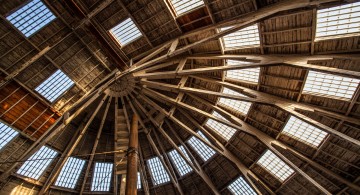
How to Increase Natural Light in your Home Design

There are a few fantastic benefits to increasing natural light in a bedroom, bathroom, kitchen, lounge or dining room, or throughout your entire home.
Firstly, it can make rooms look a lot more comfortable and inviting, especially on a sunny day when warm beams of sunlight cut through the interior space.
Secondly, it complements a wide range of colour schemes. If you prefer dark colours, then more
natural light allows you to pull that colour scheme off without it potentially looking too dull. If you
prefer lighter colour tones, then plenty of natural light can make the room look even brighter.
Artificial interior lights can work to some degree, but there’s nothing out there which can truly
replicate the luminosity or hue of natural daylight.
Thirdly, it helps to save on energy bills. Turning on the lights is always inevitable, but you can save money on lighting by taking advantage of bright sunlight throughout the day.
And finally, lots of natural daylight can simply make you feel good! Many studies have shown that
there’s a correlation between mood and daylight, with many people feeling down during the winter months when daylight is minimised. Constantly bathing yourself in lots of natural light could certainly add to a sense of improved wellbeing.
If you’re planning your next home refurbishment and would like to flood your rooms with
more natural light, here’s Bischell’s advice on how to increase natural light in your home:
Open plan layouts
One of the key benefits of open plan design is how much daylight you can allow into the interior
space. For example, a normal layout might involve 3 or 4 rooms each with their own windows.
However, with open plan design, you can have all 3 to 4 windows allowing daylight into a single
larger room. Plus, if the windows are located on different walls, then you can get a much more
universal spread of light instead of having shadowy areas due to furniture or other obstacles
blocking the light flow.
Lighter colours
Dark colours absorb more light, whilst brighter colours reflect light. By painting all of your walls a
lighter colour, they act like one giant mirror to reflect the light of every wall in the room and
diffuse it through the interior space.
Glass roofs
Another fantastic way to increase natural light in your home is through the use of a glass roof in a
protruding basement, orangery or other area in your home. Whilst a glass roof isn’t practical for
most rooms in your home, it can be used in certain areas to create a powerful design statement
which looks stunning and really can’t be beat when it comes to the amount of light being let
through.
Skylight
A skylight can be a smaller segment of a roof which is made out of a window. They’re commonly
found in loft conversions, but they can be useful for first-storey rooms in a one-storey home or
second-storey rooms in a house which doesn’t have a traditional sloped roof. Skylights let in plenty of light from the area directly above the room where the sun usually spends most of its time.
If you want minimum cost and construction work, you could even try a tubular skylight which
reflects daylight through a small tube and only requires two small diameter openings.
Bi-folding or sliding glass doors
Bi-folding doors can turn a huge segment of wall into a set of windows to allow through intense
levels of daylight. Just imagine waking up to the sun beaming through with full landscape views
out into your garden! It you want a way to increase natural light in a room, then a set of bi-fold
doors can look stunning, allow in more light and remove that intrusive barrier between the
interior rooms and your outside garden.
Use mirrors
Mirrors can amplify the amount of daylight in a room by spreading it throughout the interior space. They also do a fantastic job at increasing the perception of size in a room – which could be an added benefit if you primarily want to make a room look bigger and more spacious.
Expanded windows
Expanded windows are similar to bi-folding doors, except they obviously don’t have the door!
They’re ideal if you would like such a large increase in daylight without increasing accessibility to
an outdoor area which may not be suitable for a door. Plus, with modern technology, expanded
windows can actually reduce heating bills by allowing sunlight to heat your room whilst preventing heat from leaving due to advanced insulation properties.
Swap solid exterior doors for doors with windows
This is a simple and cost-effective method of increasing natural light in a room. Simply take out a
solid exterior door and replace it with one which has a window built-in. This could be a large
window for maximum light throughput, or even a door with a small window opening which allows
through some light whilst maximising security and privacy. If privacy is an issue, then most window doors can come with frosted glass.
Another fantastic way to use a door with windows is if you have a porch with an exterior and
interior door, so any light coming in through the porch windows can be allowed directly into the
room behind the interior door.
Remember that window, skylight and door location is key!
If plenty of natural daylight is very important to you, then consider how the windows or skylights
are placed in relation to the sun. If you want lots of sunlight flooding through during the morning,
then make sure that the opening is facing east so it captures light during sunrise. If you want your
room to be filled with the warm glow of a sunset, then make sure that the opening is facing west.
Also check for external objects which may block sunlight. It would be highly disappointing if you
paid money for a window to allow in natural sunlight, only to find that the light is blocked by a tree
or neighbour’s house!


Leave a Reply
Be the First to Comment!